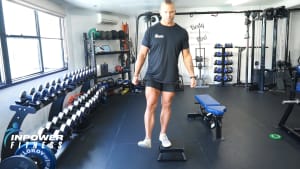
Step ups for Personal Trainers
Most personal trainers will have you focus on just squats as the primary leg exercise. This article may change your mind on that. I am not here to suggest that your personal trainer should stop your squat program and only do Bulgarian lunges. Sometime however that seems the intent of a very popular "functional” personal trainer. But I am going to extend beyond the simple approach when it comes to training that states that the more effective schedule for all trainees, no matter what their athletic or physical goals are, should start with a full set of squats, and the trainee should be performing squats in each training phase. This is not realistic.
The Keep It Simple, Stupid (KISS) principle, may be a great one, yet such a rigid strategy when it comes to personal training is also rather silly. With this warning, let us go over one of the lower body exercises that I consistently recommend to my list of clients that complement squats. In some cases, they can also become an alternative for them. It is a category of movements or exercises known as step-ups.
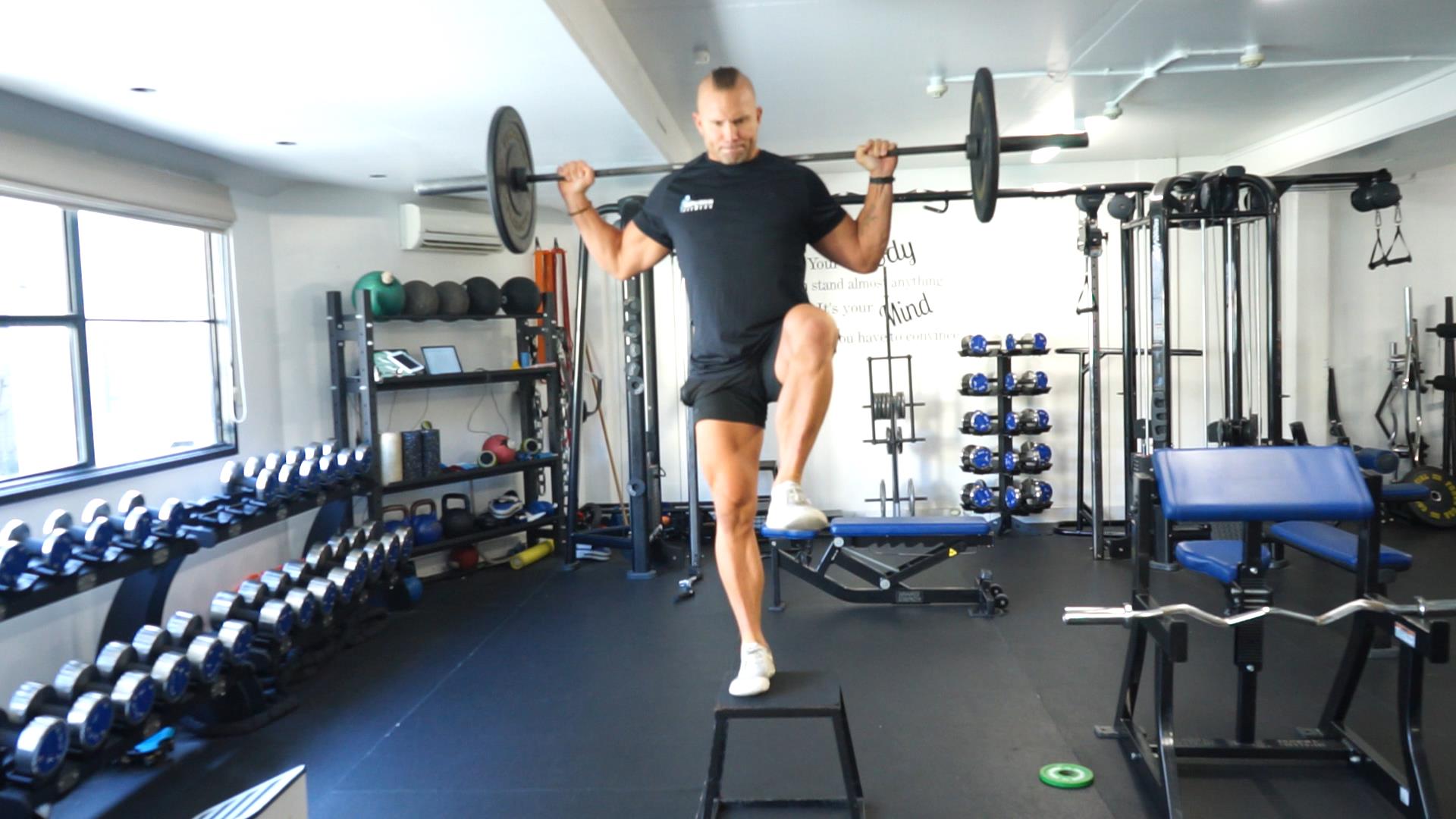
Step ups were born
Step training was created in 1989 by Gin Miller. This choreographed aerobic program includes using low-step platforms. Step training over the years gained such popularity that this exercise is frequently linked with so-called muscle toning and aerobic fitness. However, step-ups and so many of the variations are lower-body versatile exercises that are useful for structural balance, rehabilitation, high-performance athletic fitness, and body-composition training.
Cross-training references a concept that since each sport focuses on specific muscles (more than on others), athletes can accomplish balanced development of muscle. This can help them to avoid injuries, particularly overuse injuries by participating in different types of sports. For example, distance runners could during the off-season swim to build their upper bodies or golfers may play squash or tennis for balancing out muscles in the abdominals and back.
Proper Training
Yet the problem with many athletes, regardless of what sport is played is that the muscles in the lower body usually don't receive enough work through full ranges of motion. This is what leads to muscle imbalances. Therefore, step-ups are something I have always included in my balance programs.
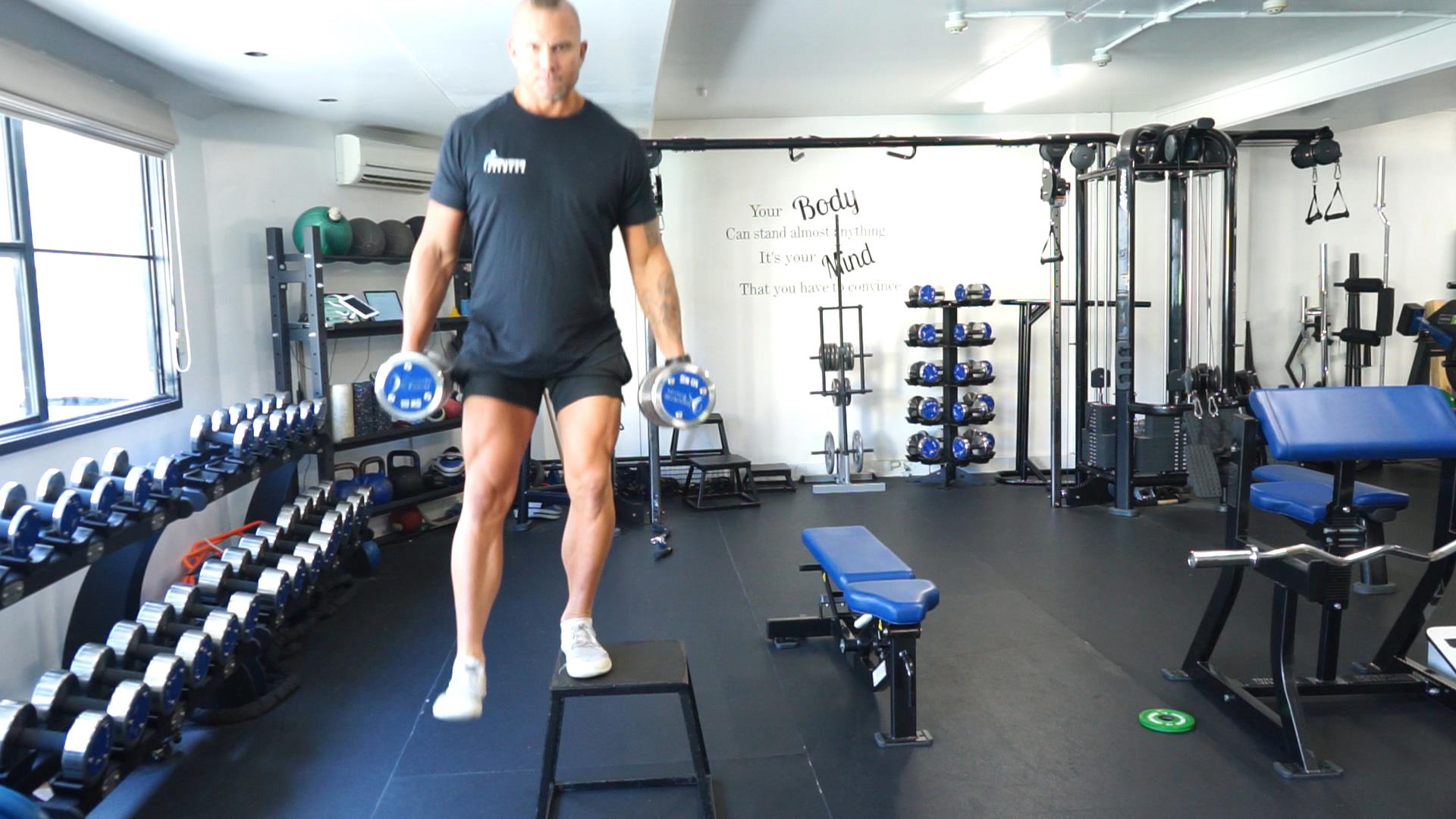
To explain further, structural balance references the main muscles in the body in balance with one another. This ultimately means balance that occurs between opposite muscle pairs ( like the triceps and biceps for arms, or hamstrings and quadriceps for legs). This also applies to the limbs (such as the left leg and the right leg).
This means it is not enough to only have the correct strength ratio that occurs between the quadriceps and the hamstrings, as an example, but the overall strength of the person's hamstrings and quadriceps on the left leg needs to be of equal strength to the muscles in the right leg.
A classic example of the effects of these structural imbalances is common in many knee injuries in female athletes. The AOSSM (American Orthopedic Society for Sports Medicine) has reported that every year over 20,000 female high-school athletes suffer from severe knee injuries, which usually involve the ACL (anterior cruciate ligament).
Creating structural balance for every muscle that impacts the knee is an important step when it comes to combating this common issue. However, structural balance goes further than preventing injuries, it also assists with the rehabilitation of the knee.
In My Experience Step Ups Have Saved Careers
During the early 2000’s, I landed a job training a youth basketball team while I was playing semi-professional myself while also personal training as a job at the time. During this time, each one of these youth athletes as well as a few of my own team mates suffered, in different degrees, from jumper's knee (patellar tendonitis). This condition involves swelling of a tendon connecting the lower-leg bone to the kneecap.
This injury type often comes about due to comparative weakness that occurs in the VMO (Vastus Medialis oblique), which is the quadricep muscle crossing over the knee joint. This muscle is very important to maintain knee stability. When the VMO is weaker in comparison to muscles on the opposite side of the leg, especially the Vastus Lateralis (which is a muscle that pulls the knee in the other direction as the VMO), this type of imbalance often causes unnatural tracking to occur in the kneecap.
When the knee of an athlete collapses inward while running or when they land a jump, this scenario often occurs due to a weak VMO. Attempting to correct these problems using full squats initially is not always the best choice, since the change in biometrics present in the knee may make the condition worse.
The Vastus Medialis oblique is one of the teardrop-shaped quadricep muscles. This is a muscle that crosses over the knee. I prescribed a program for these youth basketball players that involved step-ups, particularly an exercise known as the Peterson step-up. This movement emphasizes the VMO since it starts with an elevated heel (plantar flexion), which is then performed at increasingly higher elevations. As time went by, these step-ups allowed the athletes to advance into squats. Within only 2 months there was only one team member left with patellar tendonitis, yet I felt he was not following the workout as he should have.
Step up Variations
The advancement of step-ups I am now including in my programs includes the side step-up, the Petersen step-up, and the Poliquin step-up. The advancement of the implements that I use for adding resistance includes the barbell on the front, the barbell on the back, and the dumbbell. After that, I progress into lunges, split squats, and finally squats. From the perspective of periodization, this type of progression is best applied when the athlete's sports season has come to an end, usually when the structural imbalance is at its worst.


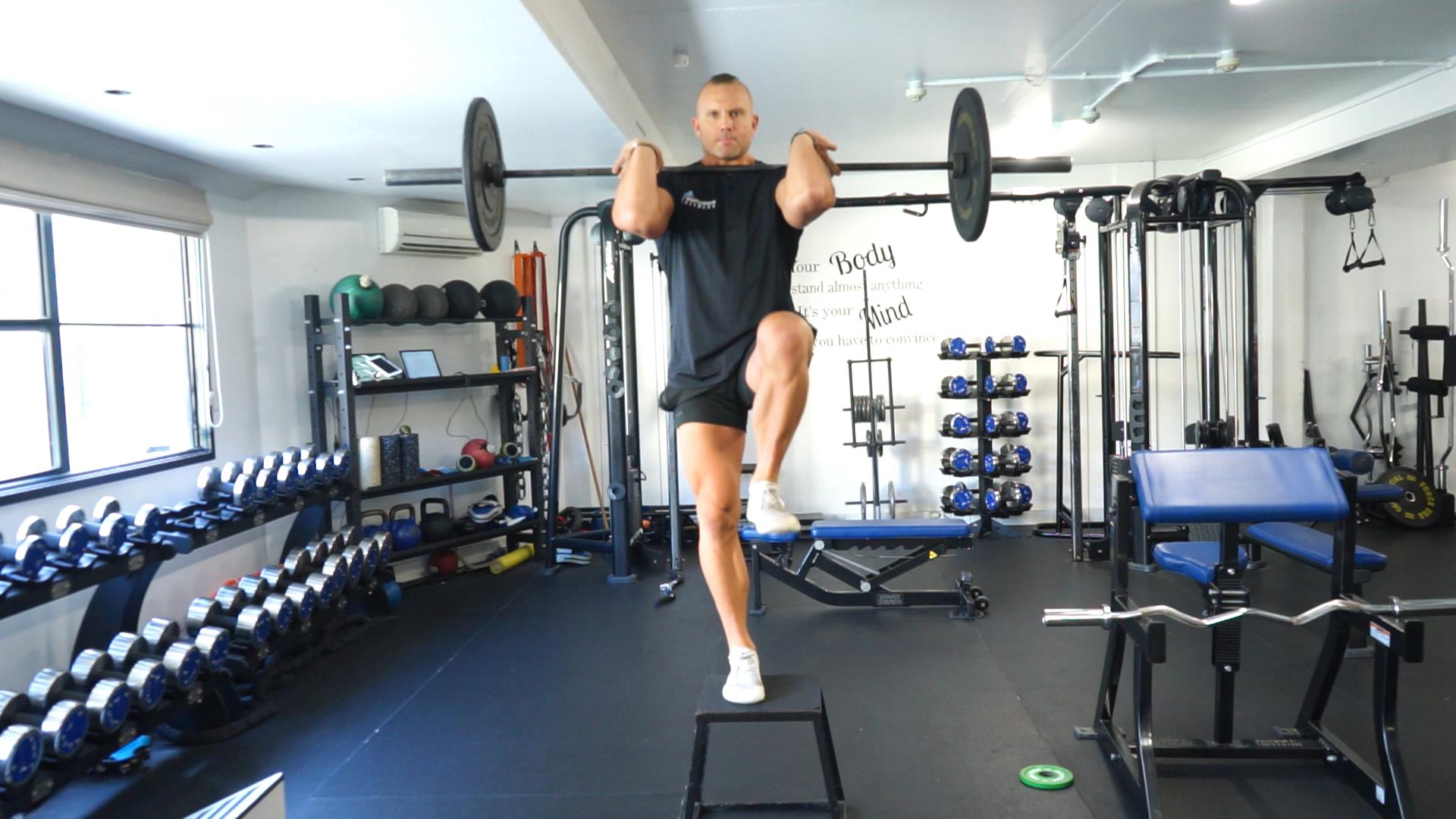
Building Massive Strength
Angel Spassov, who was once a Bulgarian strength coach, heavily promoted step-ups using weights. However, Ivan Abadjiev, the former Bulgarian National Team head coach stated that these exercises were never used by the members of any national team that he coached. With this in mind, Leonid Taranenko, a Russian weightlifter, is still the record holder for the top clean-and-jerk with an astounding lift of 266 kilos performed high step-ups as soon as he started feeling that the lower area of his back was overly fatigued from performing squats. This theory makes sense.
When you compare the position of the body during squats, when conducting step-ups your torso is at a more perpendicular angle to the ground, which requires less effort from your erector Spinae muscles which assist with extending the spine. When performing a step-up routine using a barbell weight across his shoulders, Taraneko was able to lift up to 180 kilos
However, my suggestion to anyone who is performing this type of exercise using a heavy weight, is they must have a minimum of 1 rear spotter (preferably 1 rear spotter and 2 side spotters). The spotter should be aware that the lateral stability can become compromised during this exercise, so they should watch out for tilting. And for safety, a trainee should only perform a heavy step-up inside a reliable power rack. The safety rods should also be positioned at the right height, which means the barbell won't drop too low if the athlete misses.
When it comes to personal training tips, it is important to point out that your top leg will be doing most of the work. We once had a figure skater training with us who was 52 kilos and was able to perform 115.7 kilos in step-ups with her leg in the front in a parallel position to the ground. The catch with this move is that she pushed off using her back leg, which is a highly impressive lift. However, this is not what we are looking for.
The next step involves keeping the back leg straight (but it should be slightly flexed when landing), while the bottom leg toes should lift (dorsiflex) which helps the trainee to not push off. The leg at the top should be turned out 5 degrees, a more appropriate anatomical position in comparison to how the thigh bone at the top inserts neatly into the pelvis.
With very few exceptions, I have discovered that when it comes to the different personal training clients I have been working with, in most cases, one leg will be dramatically stronger when compared to the other. This is why I start these types of clientw with single-leg exercises which results in improved long-term progress when it comes to a squat compared to if they had only performed squats.
One of the popular varieties of step-ups I use often includes the side step-ups. The starting position of the body with a side step is sideways to a platform, where the leg that is nearest to the platform gently rests against the platform. Once again, the athlete will step up until the leg that is working is straight.
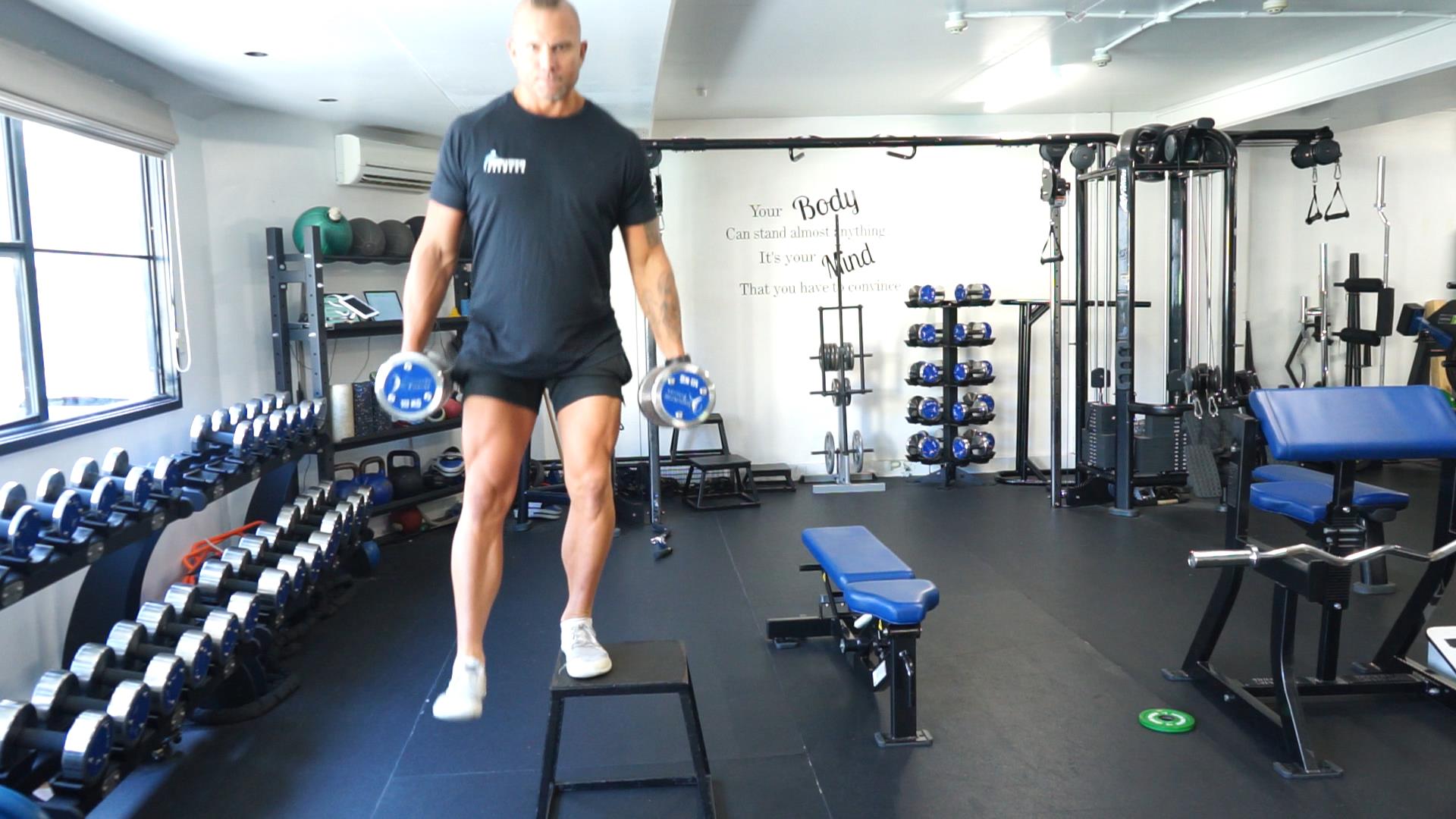
This exercise focuses more on the Vastus Lateralis and the adductors (the inner thigh muscle groups), which is very important for an athlete since it helps to keep the leg stable during movement. There are several other helpful categories of step-ups. There are also step-up platforms that adjust to help trainees to perform the exercises safely and conventionally.
Yet it is important to know that not every platform is equal when it comes to safety. A D1 college in the U.S faced a lawsuit when one of the female athletes sustained a very serious injury while performing a barbell step-up on one of the technique platforms that attach to a power rack. This V-shaped platform does not offer enough support for the feet, and these platforms were actually not made for these purposes just like this one I did on a preacher bench.
The Atlantis Leg Platform, in contrast, which my mentor assisted with the design, adjusts in 1-inch increments, from 31-inches to 7-inches. The platform is nonslip and it also includes a handle along the front to help the upper part of the body to help with concentric parts of an exercise, which makes it very valuable for rehabilitation.
Even though it weighs 50kgs, it comes with wheels to promote easy mobility. I think that the Atlantis Leg Platform should feature in any type of gym. Even though the squat will always be one of the top exercises, the step-ups and its versatility make it one of the core exercises for all athletic fitness and physical training programs.
P.s I have included a Video of these step up variations here. https://youtu.be/nXuUQ7idhCo




